Table of Contents
Stars and the Solar System Class 8 Extra Questions Science Chapter 17
Stars and the Solar System Class 8 Extra Questions Very Short Answer Questions
Question 1.
Name the planet nearest to the Sun.
Answer:
Mercury
Question 2.
What is the speed of light?
Answer:
300000 km per second (3 x 108 m/s).
Question 3.
Which is the brightest planet in the night sky?
Answer:
Venus
Question 4.
Name the star which is nearest to our solar system.
Answer:
Alpha centuari
Question 5.
Which planets do not have satellite of their own?
Answer:
Venus and Mercury
Question 6.
How many planets are there in our solar system?
Answer:
Eight
Question 7.
Which planet is called Red planet?
Answer:
Mars
Question 8.
Why Earth appears blue from space?
Answer:
Due to presence of water Earth appears blue from space.
Question 9.
What is the other name of Orion?
Answer:
Hunter
Question 10.
Which planet is least dense among all?
Answer:
Saturn
Question 11.
Do stars emit light only during night time?
Answer:
No, they emit light all the time.
Question 12.
Name the unit which is used to measure astronomical distances?
Answer:
Light year
Question 13.
What is asteroid?
Answer:
Asteroid is a small rocky body orbiting the sun or found between the orbit of Mars or Jupiter.
Question 14.
Which is the other name of constellation Great Bear?
Answer:
Saptarishi
Question 15.
What is Sun?
Answer:
Sun is a star.
Stars and the Solar System Class 8 Extra Questions Short Answer Questions
Question 1.
What are meteors?
Answer:
Meteors are bright streaks of light in the sky produced by the entry of a small meteoroids into the Earth’s atmosphere. They are also called the ‘shooting stars’.
Question 2.
What is a satellite?
Answer:
A satellite is defined as a heavenly body that moves around another heavenly body along its own orbit.
Question 3.
What is artificial satellite? Give examples.
Answer:
Satellites that are made by man are called artificial satellites. Example, INSAT, IRS EDUSAT, etc.
Question 4.
What are meteorites?
Answer:
The meteors which are so large that they do not evaporate completely before reaching the earth’s surface are called meteorites.
Question 5.
What are comets?
Answer:
Comets are the members of our solar system. They revolve around the sun in highly elliptical orbit as a bright head with a long tail.
Question 6.
Define phases of Moon.
Answer:
The various shapes of the bright part of the Moon as seen during the month are called phases of Moon.
Question 7.
What are celestial objects?
Answer:
The objects such as stars, the planets, the moon and many other objects, in the sky are called celestial objects.
Question 8.
What are planets?
Answer:
The celestial bodies which revolve around the sun are called planets. There are total eight planets in our solar system, namely, Mercury, Venus, Earth, Mars, Jupiter, Saturn, Uranus and Neptune.
Question 9.
Why the Sun is also called as star?
Answer:
The Sun is also called as star because it has its own source of energy and it continuously emits light and heat.
Stars and the Solar System Class 8 Extra Questions Long Answer Questions
Question 1.
What is the solar system? Explain.
Answer:
The sun along with the eight planets, the moons, and other heavenly bodies form the solar system. Our solar system is a part of the milky way galaxy. The sun is at the centre of the solar system around which all other planets rotate. Except Mercury and Venus, remaining six planets have their natural satellite revolving around them in a particular orbit. In our solar system, Earth is the only planet having life. This is due to the hostile conditions available in it. Sun is the ultimate source of energy for sustenance of life on the Earth.
Question 2.
What makes life possible on planet Earth?
Answer:
Some special environmental conditions responsible for the existence and continuation of life on the Earth are:
- Right distance from the Sun
- Right temperature range
- Presence of water
- Presence of oxygen and hostile atmosphere
- Presence of a blanket of ozone
Question 3.
Differentiate between the following:
(a) Star and planet
(b) Asteroid and comet
(c) Meteoroid and comet
(d) Galaxy and constellation
Answer:
(a)
| Star | Planet |
| (i) Star twinkles in the sky. | (i) Planet do not twinkle in the sky. |
| (ii) It has its own light. | (ii) It has no light. |
| (iii) It is fixed at a point. | (iii) It revolve around the sun. |
| (iv) It is very big in size. | (iv) It is very small compared to the star. |
(b)
| Asteroid | Comet |
| (i) Asteroids are made up of metals and rocky material. | (i) Comets are made up of ice, dust and rocky material. |
| (ii) It rotates nearer to the sun. | (ii) It rotates farther from the sun. |
| (iii) It does not has any tail of volatile material. | (iii) It has tail of volatile gases when passing close to the sun. |
(c)
| Meteoroid | Comet |
| (i) It is a small particle from a comet or asteroid orbiting the sun. | (i) It is made up of ice, dust and rocky material. |
| (ii) It enters the Earth’s atmosphere. | (ii) It does not enter the Earth’s atmosphere. |
(d)
| Galaxy | Constellation |
| (i) It is a collection of billions of star. | (i) It is a collection of only a few stars. |
| (ii) It does not resemble shape of human beings or animals. | (ii) It is arranged in patterns resembling human beings or some animals. |
| (iii) There are billions of galaxies in the Universe. | (iii) There are only about 88 constellations. |
Question 4.
Write few lines about every planet of the solar system.
Answer:
There are total eight planets in our solar system which are as follows:
- Mercury: Mercury is the planet which is nearest to the sun. It is the smallest planet of the solar system. It has no satellite of its own.
- Venus: Venus is the second planet in our solar system. It is the brightest planet in the night sky.
It has no moon or satellite of its own. - Earth: It is the third planet of the solar system and is the only planet on which life exists. It has only one moon.
- Mars: The fourth planet of our solar system is Mars. It is also called the red planet. Mars has two satellites.
- Jupiter: It has large number of satellites and it is the largest planet of our solar system.
- Saturn: Saturn appears yellowish in colour. It contains beautiful rings which are not visible with naked eyes.
- Uranus: It is the seventh planet of our solar system. It is the second outermost planet of solar „ system.
- Neptune: It is the last planet of our solar system.
Question 5.
Explain why do we see phases of moon.
Answer:
The moon does not have its own light. We see the moon because the sunlight falling on it gets reflected toward us. thus, we see only that part of the moon which reflects light keeps on changing daily. This happens because the moon revolves around the earth along with this moon also revolves around the sun. Therefore, we see phases of the moon.
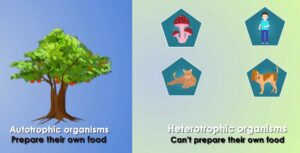
Question 6.
What is constellations? Name and explain some major constellations.
Answer:
The groups of stars that make an imaginary shape in the night sky are called constellations (nakshatras). They are usually named after mythological characters, people, animals and object they resemble in shape. There are 88 constellations known so far.
Some major constellations are:
- Ursa Major (Great Bear): It is one of the most well known constellations and the third largest one. It looks like a big dipper. It is visible in the northern hemisphere. It has groups of seven relatively bright star.
- Ursa Minor (Little Bear): It is ladle shape similar to Ursa Major. It also consists of seven stars. At the end of the Little Bear’s tail is the pole star. It is the nearest bright star to the north celestial Pole.
- Orion (Hunter): It has seven prominent stars. The three middle stars represent the belt of hunter and four stars form a quadrilateral.
- Cassiopeia: It is a constellation in the northern sky that looks like a distorted letter W or M. It is visible during the winter in the early hours of night.
- Leo: Leo contains several bright stars making it one of the most easily recognisable constellations in the night sky. It is visible in both Northern and Southern hemispheres.
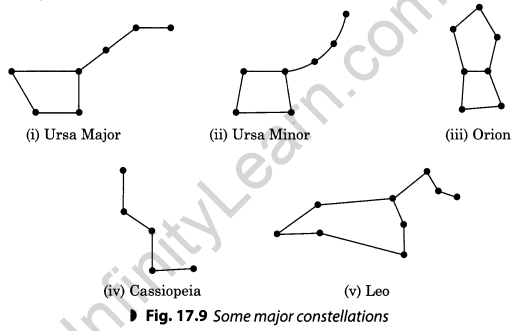
Stars and the Solar System Class 8 Extra Questions Higher Order Thinking Skills
Question 1.
A star is ten light years away from the Earth. Suppose it brightens up suddenly today. After how much time shall we see this change?
Answer:
We shall see this change after ten years only because this change which occurred today will reach to our eyes through space after ten years only.
Question 2.
Why meteors are not visible during daytime?
Answer:
The brightness of the streak of light formed by meteors are extremely less compared to that of the sun. Thus, meteors are not visible during daytime.
Question 3.
If the moon emits light of its own, then would it still have phases?
Answer:
The moon does not have its own light. It shines due to the reflected light of the sun. Therefore, phases are formed. If the moon emits its own light then no shadows will be formed and hence as a result no phases will be formed.
Question 4.
Why do we always see the same side of moon?
Answer:
The period of rotation of the moon on its own axis is equal to the period of its revolution around the earth. So, we always see the same side of moon.
Question 5.
If the distance between Earth and Sun becomes half of its present distance, what is likely to happen to life? Justify your answer.
Answer:
If the distance between the Earth and the Sun becomes half, then temperature of Earth will increase to alarming levels. Water on the Earth will evaporate leaving it dry. Most of the plants will die. Thus, ultimately ending all the life on the Earth.
Stars and the Solar System Class 8 Extra Questions Value-Based Questions
Question 1.
Most people blame stars and planets in their horoscope for being unsuccessful in their lives. Rohan is one of them. He believes that positioning of Saturn in wrong place in his horoscope is the reason of his bad performance in studies.
- What are the heavenly bodies?
- Do you really think that these heavenly bodies play an important role in our failure or success?
- Have you ever heard these kind of things regarding your failure, success or before doing any auspi-cious work? From whom?
- What value of Rohan is shown here?
Answer:
- A natural celestial object, visible in the sky, such as a star, planet, natural satellite, asteroid, comet, moon or sun is known as heavenly body.
- No.
- Yes, I have often heard these kind of things from my grandparents, parents and priest.
- Rohan is very superstitious, lazy as rather than studying he is blaming planets, orthodox, etc.
Activities and Projects
Question 1.
If possible, visit a planetarium. There are planetariums in many cities. In a planetarium you can see the motion of the stars, constellations and planets on a large dome.
Answer:
Do it yourself.
Question 2.
On a moonless night observe the sky for a few hours. Look out for a meteor, which appears as a streak of light. September-November is a good time for observing meteors.
Answer:
Do it yourself.
Question 3.
Learn to identify the planets visible to the naked eye and some prominent constellations such as Great Bear (Saptarishi) and Orion. Also try to locate the Pole Star and the star Sirius.
Answer:
Do it yourself.
Question 4.
Select a convenient place on the roof of your house or in some playground from where you can watch sunrise clearly. Remember that you will have to do this activity for a few months. So, choose the place carefully. On a sheet of chart paper draw the outline of the eastern ho¬rizon indicating big trees, poles, etc. Mark the outline of the sheet so that you can place it in the same position every time. After every two weeks, note the position from where the Sun rises and mark this on your chart paper (Fig. 17.7). Also note the date of your observation. Repeat this for a few months.
It is advisable that you start observations in the month of November or May.
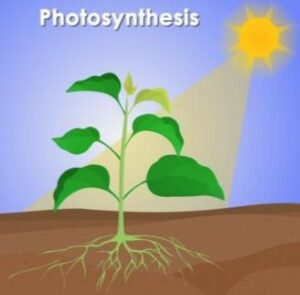
Does the Sun always rise from the same direction? Discuss your observations with your teacher, parents and elderly people in your family or in the neighbourhood.
Answer:
Do it yourself.
Question 5.
Form a group of students. Prepare a model of the solar system showing the planets, and their relative sizes. For this take a large chart paper. Make spheres representing different planets according to their relative size (Use Table 17.1). You may use newspaper, clay or plasticinp to make spheres. You can cover these spheres with paper of different colours. Exhibit your models in the class.
Table 17.1
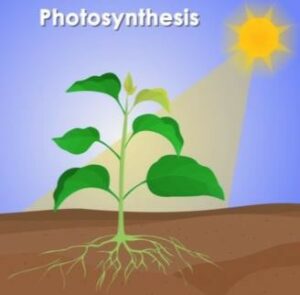
Answer:
Do it yourself.
Question 6.
Try to make a scale model of the solar system showing distances of the planets from the Sun (Use Table 17.1). Did you face any difficulty? Explain it.
Answer:
Do it yourself.
Question 7.
Solve the following riddle and try to make similar riddles yourself:
My first is in VAN but not in PAN
My second is in EARTH and also in HEAVEN
My third is in ONE and not in TWO
My fourth is in BUN and also in FUN
My last is in STAR but not in RADAR
I am a planet that moves round the Sun.
You can read more on the following websites:
- http://www.nineplanets.org
- http://www.kidsastronomy.com
Answer:
Venus.
I. Multiple Choice Questions (MCQs)
Choose the correct option.
Question 1.
The planet which is nearest to sun is
(a) Neptune
(b) Mercury
(c) Earth
(d) Mars
Question 2.
Farthest planet of the solar system is
(a) Neptune
(b) Jupiter
(c) Mercury
(d) Earth
Question 3.
The largest planet in the solar system is
(a) Mercury
(b) Mars
(c) Jupiter
(d) Saturn
Question 4.
The brightest planet of the solar system is
(a) Mercury
(b) Venus
(c) Earth
(d) Saturn
Question 5.
Which planet is called morning star or evening star?
(a) Venus
(b) Mars
(c) Jupiter
(d) Mercury
Question 6.
Orion is a
(a) constellation
(b) star
(c) planet
(d) satellite
Question 7.
Which of the following is not a planet?
(a) Ursa Major
(b) Saturn
(c) Neptune
(d) Mercury
Question 8.
Our galaxy is known as
(a) Earth galaxy
(b) Sun galaxy
(c) Milky way galaxy
(d) Constellation
Question 9.
Which star is nearest to the earth?
(a) Pole star
(b) Cassiopeia
(c) Orion
(d) Sun
Question 10.
How many stars does orion constellation have?
(a) 8
(b) 10
(c) 12
(d) 4
Question 11.
The Halley’s comet is seen after every
(a) 76 months
(b) 76 years
(c) 56 months
(d) 56 years
Question 12.
Stars appear to move from
(a) West to East
(b) East to West
(c) North to South
(d) South to West
Question 13.
The gap between the orbit of Mars and Jupiter have
(a) asteroids
(b) comets
(c) meteor
(d) meteorite
Question 14.
The planet which appears yellowish
(a) Asteroids
(b) Mars
(c) Uranus
(d) Saturn
Question 15.
The first outside orbit of the earth’s planet is
(a) Jupiter
(b) Mars
(c) Saturn
(d) Uranus
Question 16.
Suppose a new planet is discovered between Uranus and Neptune. Its time period would be
(a) less than that of Neptune
(b) more than that of Neptune
(c) equal to that of Neptune or Uranus
(d) less than Uranus
Question 17.
If standing on the surface of moon, we throw a ball upward, then the ball would
(a) directly fall down from the point it is released.
(b) hang in space.
(c) go up and then come back to the surface of the moon.
(d) keep going up never to come back.
Answer:
1. (b)
2. (a)
3. (c)
4. (b)
5. (a)
6. (a)
7. (a)
8. (c)
9. (d)
10. (a)
11. (b)
12. (b)
13. (a)
14. (d)
15. (b)
16. (a)
17. (c)
II. Fill in the Blanks
Fill in the blanks with suitable word/s.
1. First artificial satellite launched by India is ___________.
2. Stars have their own ___________.
3. ___________ is the brightest object in the night sky.
4. The various shapes of the brightest part of moon are called ___________.
5. ___________ and ___________ are the nearest planet to our Earth.
6. ___________ is the extremely cold planet.
7. There are total ___________ planets in our solar system.
8. The path of the planets is known as ___________.
9. ___________ is a group of stars arranged in a definite pattern.
10. ___________ star appears stationary near the northern horizon.
11. ___________ are the celestial bodies revolving around the planet.
12. ___________ is the distance travelled by light in one year.
13. ___________ are the bright objects which revolve around the sun.
14.___________ is the planet which is nearest to the Sun.
15. Milky Way Galaxy is also known as ___________.
Answer:
1. Aryabhatta
2. light
3. Moon
4. phases of moon
5. Venus, Mars
6. Neptune
7. eight
8. orbit
9. Constellation
10. Pole
11. Satellites
12. Light year
13. Planets
14. Mercury
15. Akashganga
III. Match the following
Match the items given in column I suitably with those given in column II.
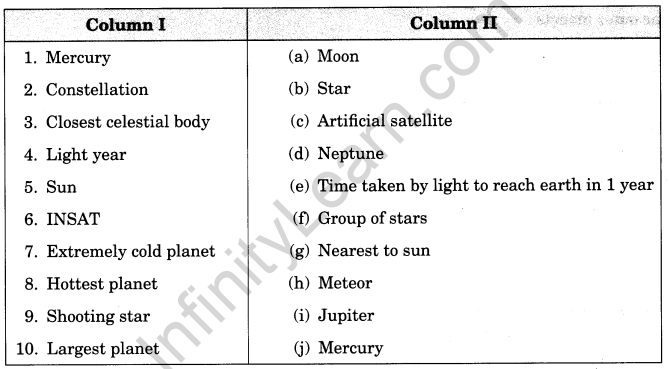
Answer:
1. (g)
2. (f)
3. (a)
4. (e)
5. (b)
6. (c)
7. (d)
8. (j)
9. (h)
10. (i)
IV. True or False
State whether the given statements are true or false.
1. Mars is the fourth planet of the solar system.
2. Sun is a satellite.
3. Orion is seen during winter season.
4. The second outermost planet is Uranus.
5. Earth is the third planet of the solar system.
6. Neptune is the largest planet of the solar system.
7. The mass of Jupiter is about 318 times that of our Earth.
8. Saturn and Uranus have ring around them.
9. The stars have light of their own.
10. Mercury is the earth’s nearest planet.
11. There are total 8 planets in the solar system.
12. Saturn is the extremely cold planet.
13. Moon emits light of its own.
14. Change in seasons on the earth is due to the tilted axis of rotation of the earth with respect to the plane
of its orbit.
15. Ursa Major is a constellation.
Answer:
1. True
2. False
3. True
4. True
5. True
6. False
7. True
8. True
9. True
10. False
11. True
12. False
13. False
14. True
15. True





